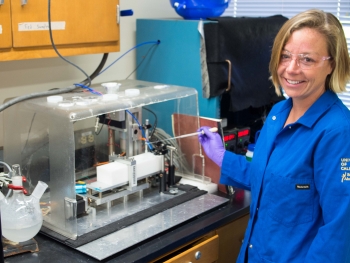
School:
Grade Level:
Teaching Position:
Supervisor:
Department:
Mentor:
Research Project Year:
Research Project Title:
Research Project Description:
A process of colloidal lithography (Langmuir-Blodgett Dip Coating) was used to deposit various size spheres (310 nm to 2530 nm) of SiO2 (silica) on to various substrates. The lithography method consisted of functionalizing the nanoparticles of silica for 24 hours, then suspension in solution, and finally depositing the particles onto different substrates. These silica masks were used in reactive ion etching as pattern transfer to create the moth-eye arrays onto the various substrates. The moth-eyes were of varying height and diameter based on the initial size of the silica mask. The moth-eye arrays are used to achieve highly efficient, Omni-directional transmission of near to far infrared (IR) radiation as well as improving the anti-reflective aspects of the substrates over various wavelengths.
Research Project Attachments:
| Attachment | Size |
|---|---|
| 8.92 MB |
Curriculum Project Year:
Curriculum Project Title:
Curriculum Project Description:
During the school-year my students will be working on a year-long PBL (Project Based Learning) focusing on the bio aspects of being able to survive on Mars. The main objective is to have the students develop a living pod/greenhouse (human/plant) that will protect the inhabitants from temperature extremes, radiation, geological challenges (winds/volcanoes), atmospheric conditions, growing conditions/limitations, resource availability (water/nitrogen), and any other challenges that the students happen to discover on their own. This particular PBL will cover all of the 8th grade integrated Next Generation science standards while alco covering the science and engineering principles and the cross-cutting concepts. Although there are specific earth, life and physical science standards covered; the standards will be interwoven and revisited with each of the 7 topics in the rough outline (example: soil in earth and life science standards).
